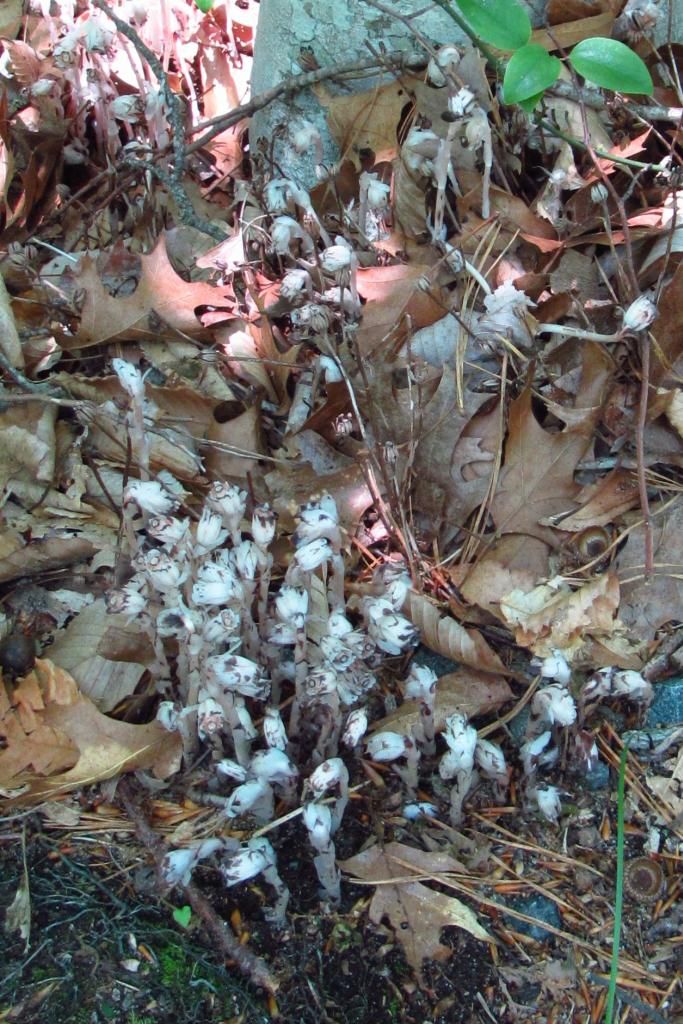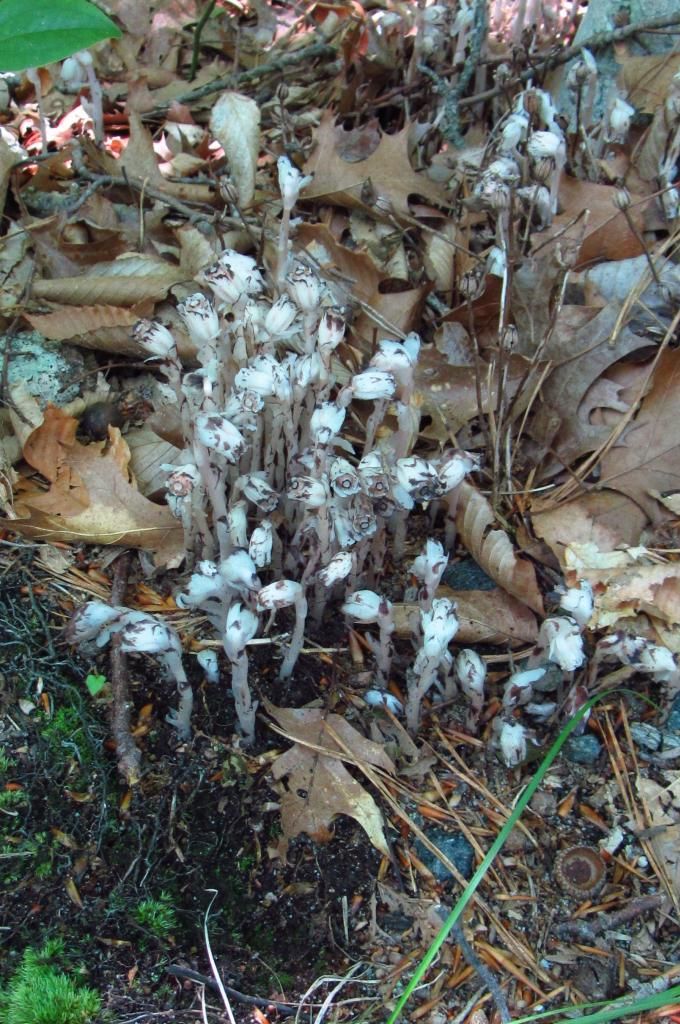This week’s featured native plant is unusual in several ways. Lacking chlorophyll, Indian pipe (Monotropa uniflora) is not green at all. It’s mostly white, inspiring the common names ghost flower or ghost plant. I thought it was a fungus on first sight. In addition, Indian pipe “is more of a parasite,” using a fungus to draw nutrients from nearby plants. Several pictures of this strange wildflower are after the jump.
This is an open thread: all topics welcome.
Full disclosure: I have not seen Indian pipe in Iowa. I took the enclosed photos on a nature walk in another state. The plant is native to most of the U.S. and Canada and thrives in shady woods, where there is plenty of decaying matter around. It may bloom from June to September. The Lady Bird Johnson Wildflower Center website describes the plant as follows:
Waxy white plant that blackens with age; stems covered with scaly bracts and terminated by a solitary nodding flower that looks like a shepherd’s hook.
These plants were once believed to absorb all nutrients from decayed organic material, but it is now known that they are associated with a fungus, which obtains nutrients directly from the roots of green plants. Indian Pipe, therefore, is more of a parasite, with the fungus as a bridge between it and its host. The plant turns black as the fruit ripens or when it is picked and dried.
Indian pipe often grows in clusters:
This website includes some close-up shots of Indian pipe flowers and a good explanation of how the plant grows without chlorophyll.
Indian Pipe has two special relationships; one with a tree, and one with a fungus. Actually, it’s one relationship, where Indian Pipe takes nutrients from both the tree and the fungus at the same time.
Here’s how it works: Since Indian Pipe has no chlorophyl, it can’t make its own food like most plants. Therefore, it has to “borrow” nutrients, either from decaying plant matter, or from another organism. The way it does this is by having its roots tap into the mycelia (root-like threads) of a fungus. The Indian Pipe can then take nutrients directly from the fungus. Meanwhile, the fungus itself has another relationship going on with a tree. The fungus’s mycelia also tap into the tree’s roots. Many fungi and trees have this type of relationship — it’s called a “mycorrhizal relationship.” The fungus gives nutrients to the tree and the tree gives nutrients to the fungus. Both organisms help each other out.
Indian Pipe, however, does not give anything back to the fungus or the tree. It takes nutrients from the fungus that the fungus had gotten for itself, and it also takes nutrients that the fungus had received from the tree. Since the fungus then has to take more nutrients from the tree, this makes Indian Pipe a parasite of both the fungus and the tree.
According to the Gardening Knowhow website, Indian pipe thrives near certain species, including American beech trees. I found this clump next to a beech tree.
Indian pipe droops when it first appears, but the plant straightens out as it matures. Scroll down this page on the US Wildflowers site to see the flowers straightened out.
In Wildflowers of Iowa Woodlands, Sylvan Runkel and Alvin Bull write that native American tribes and early European settlers both used Indian pipe to treat sore eyes; “Clear juice from the stem–sometimes diluted with water–was dropped directly into the eye.” There are also records of using the dried plant “as a sedative, to ease pain, to reduce nervousness, and to treat epilepsy and other convulsions.”



